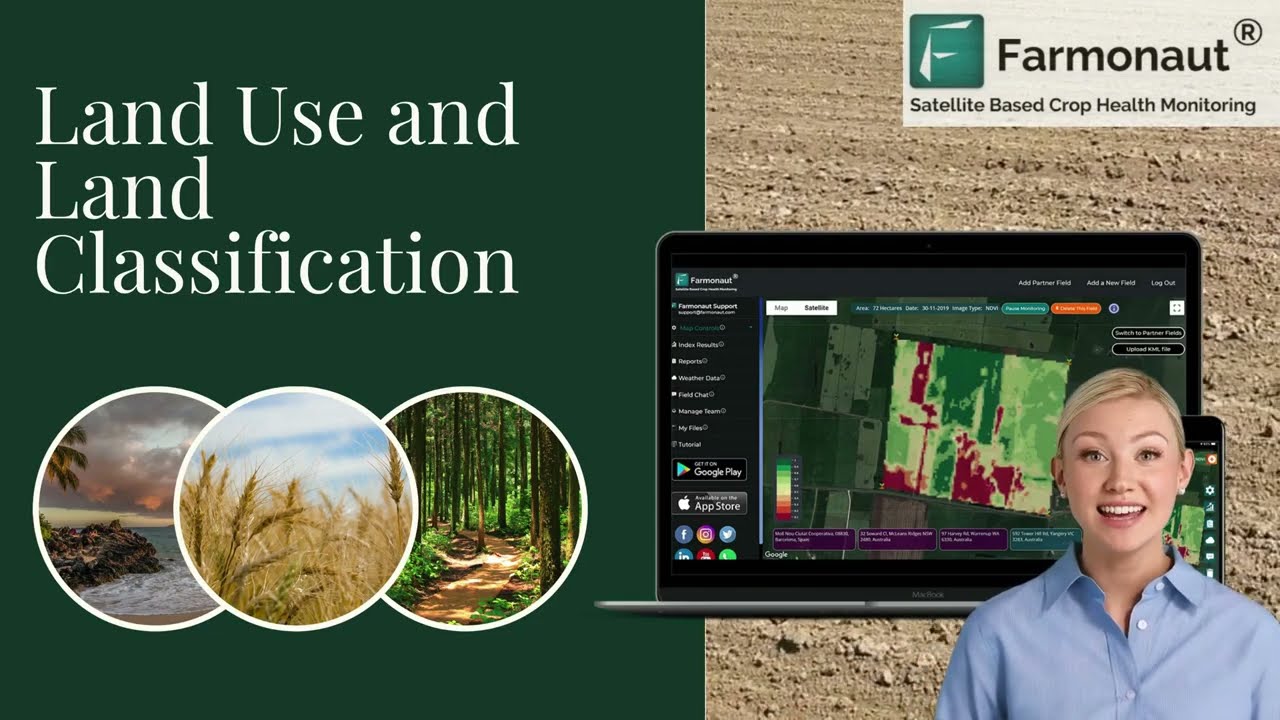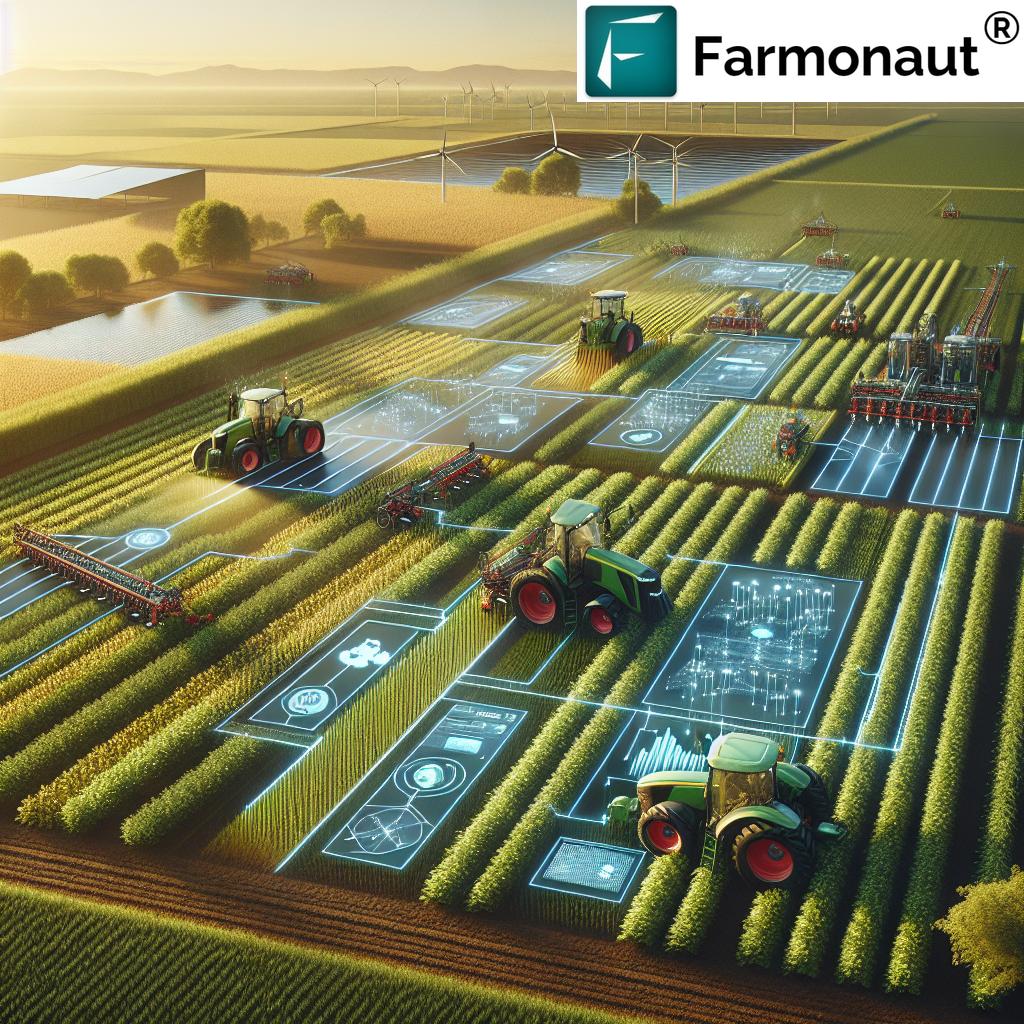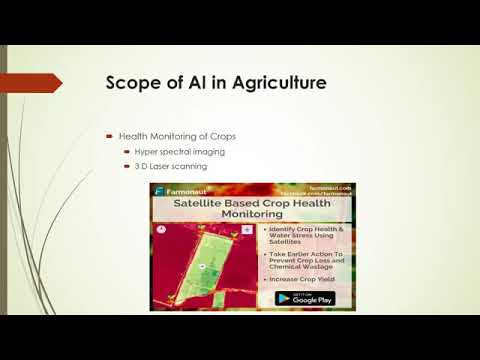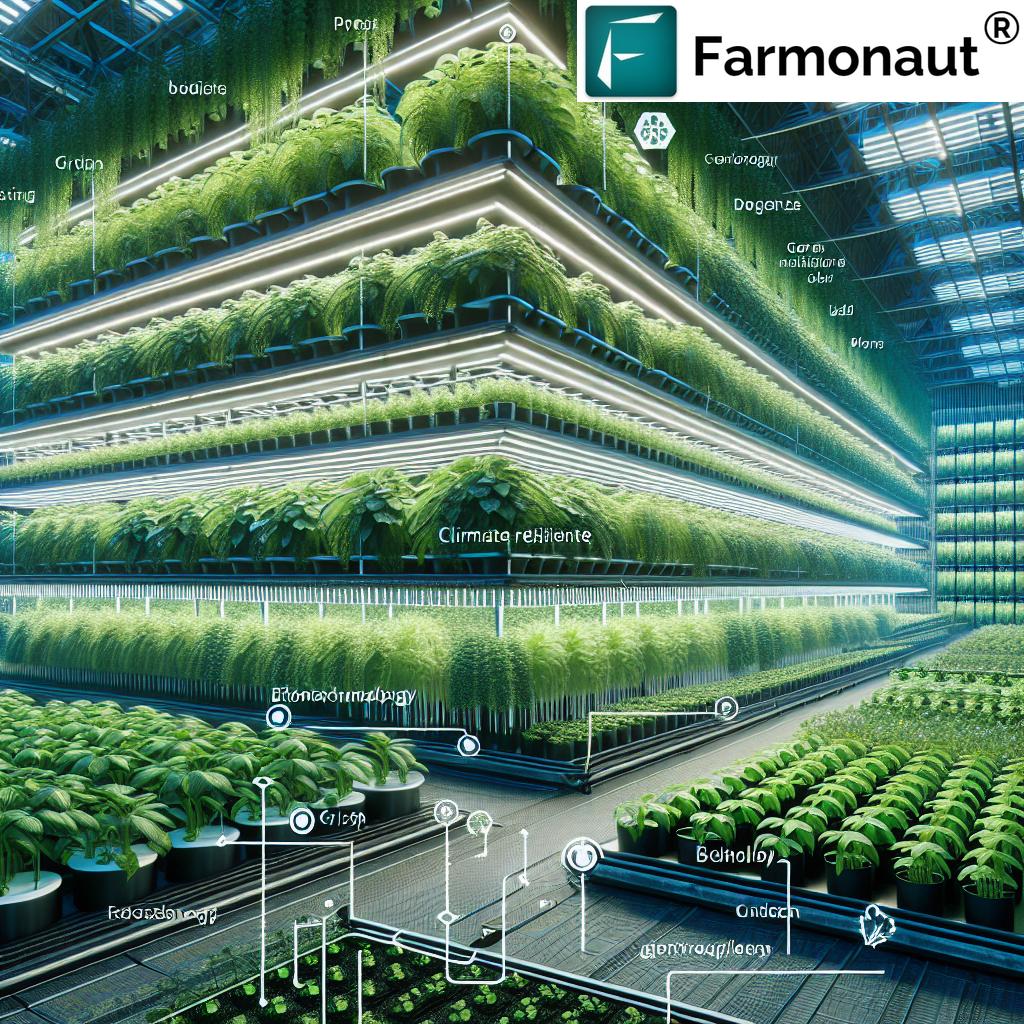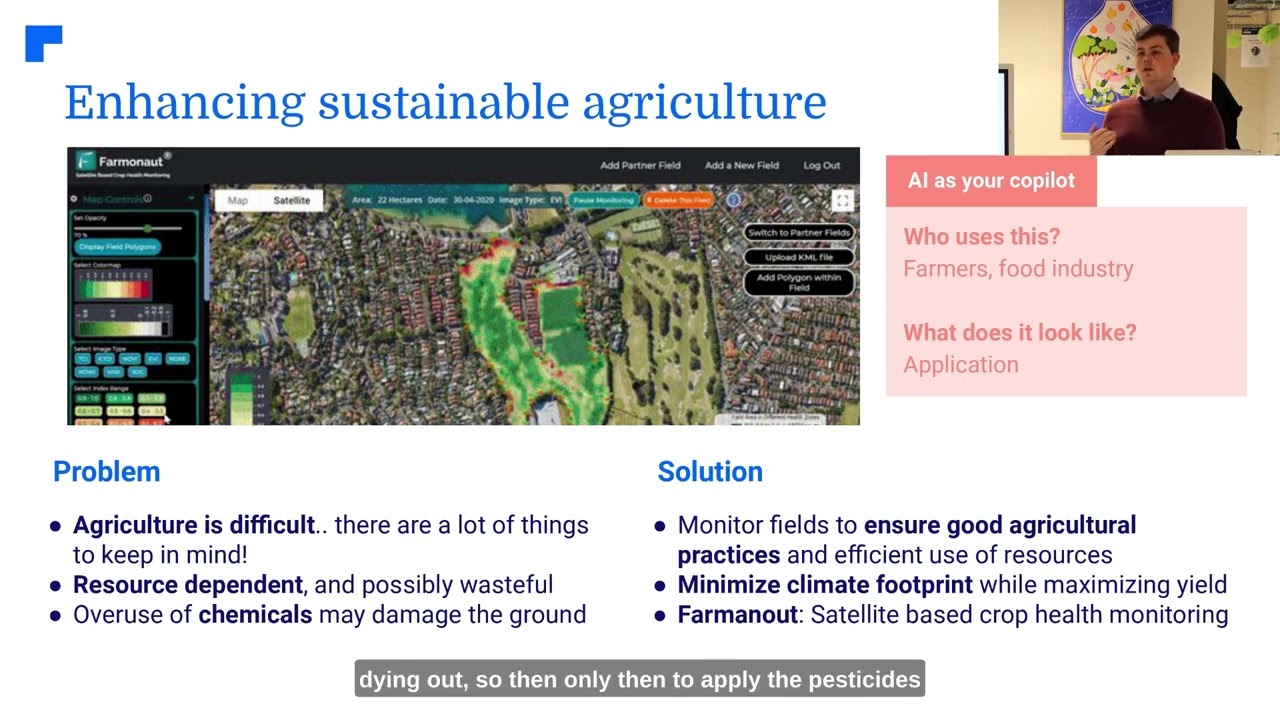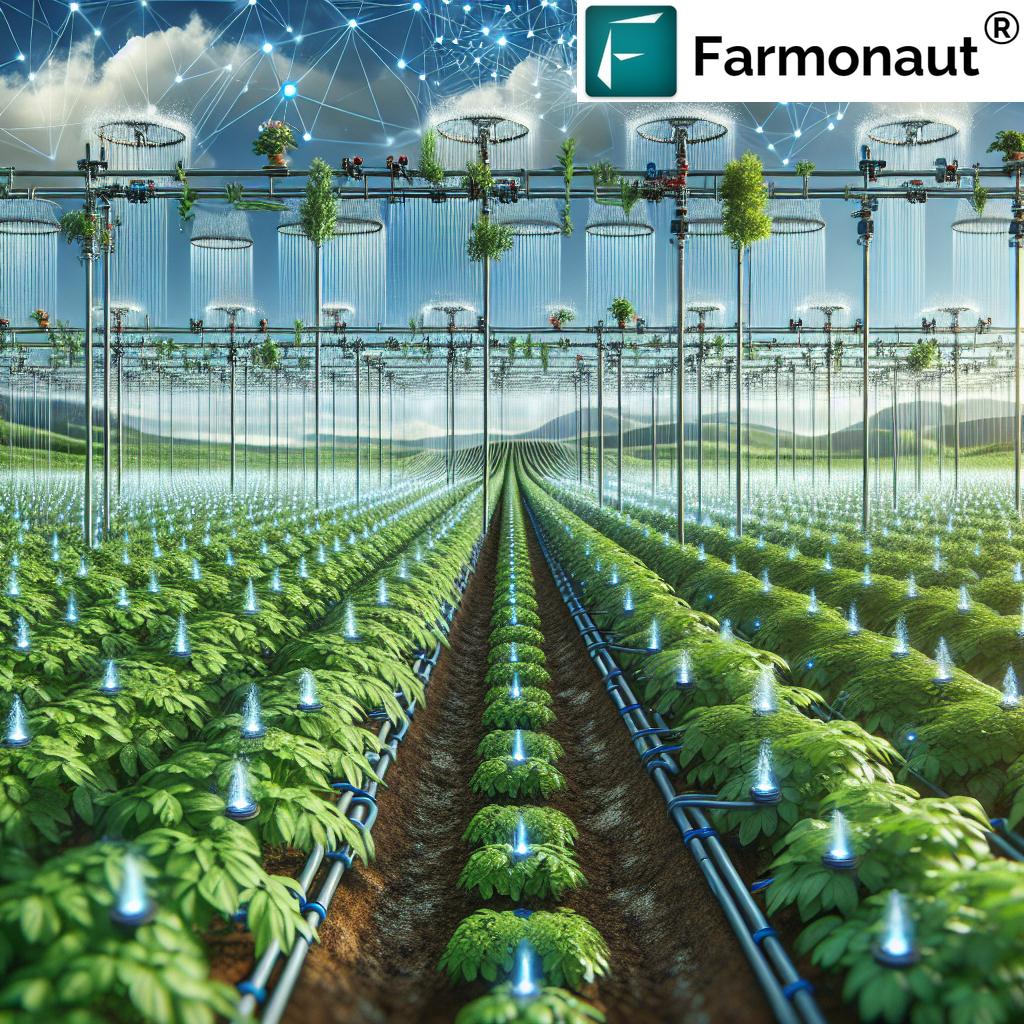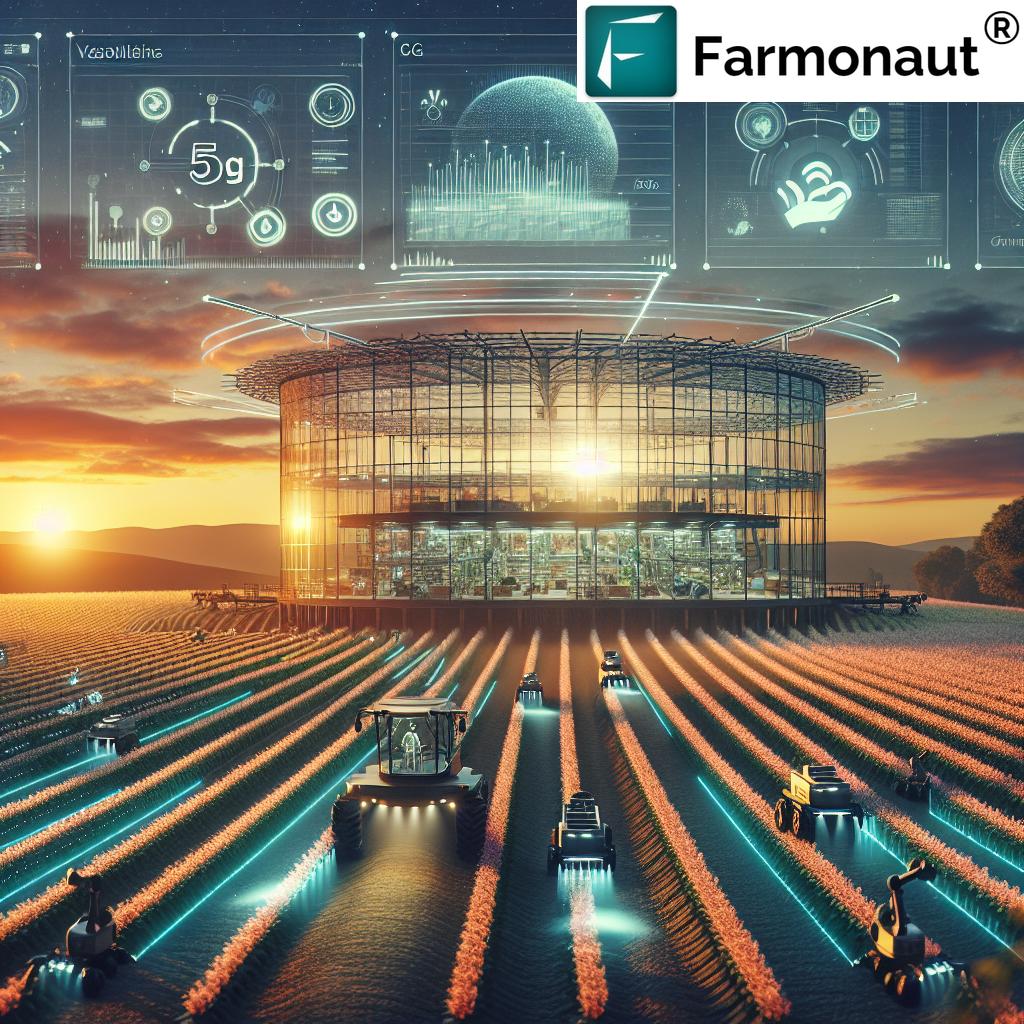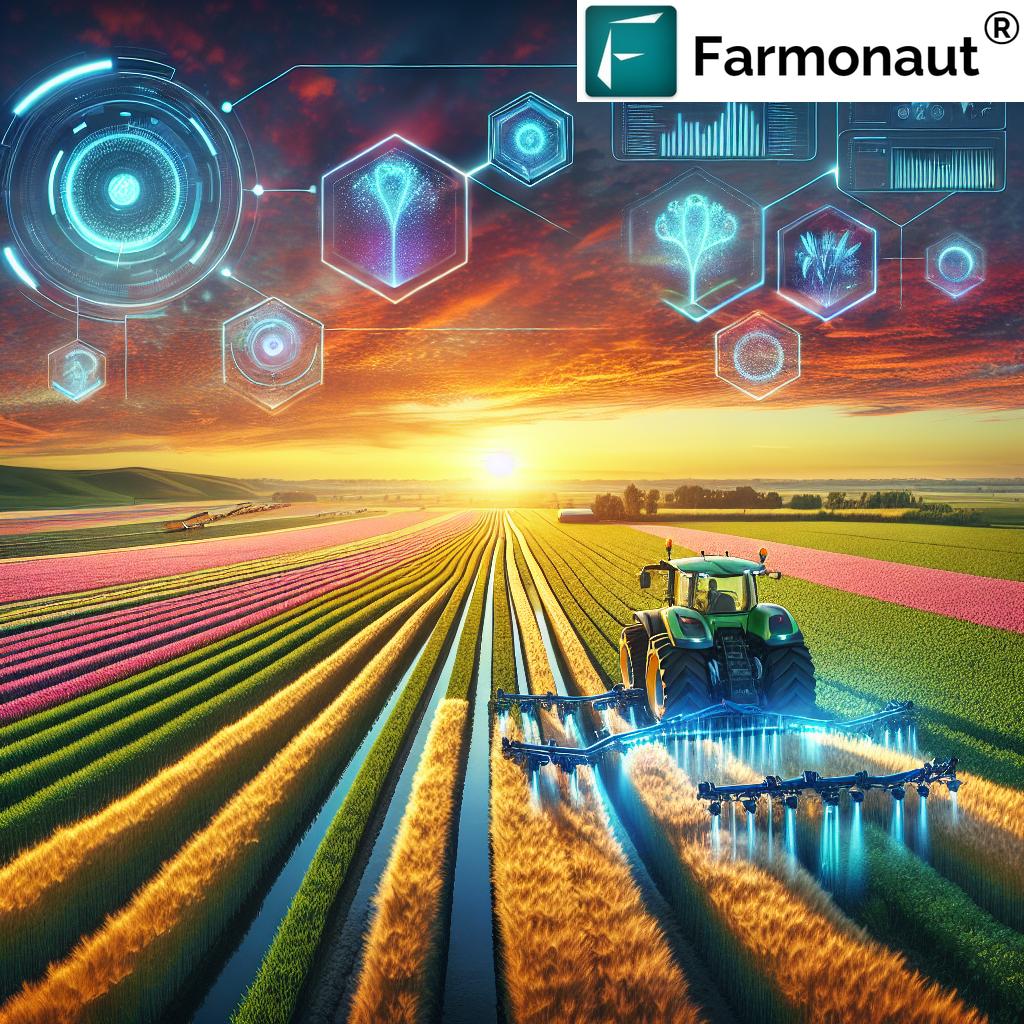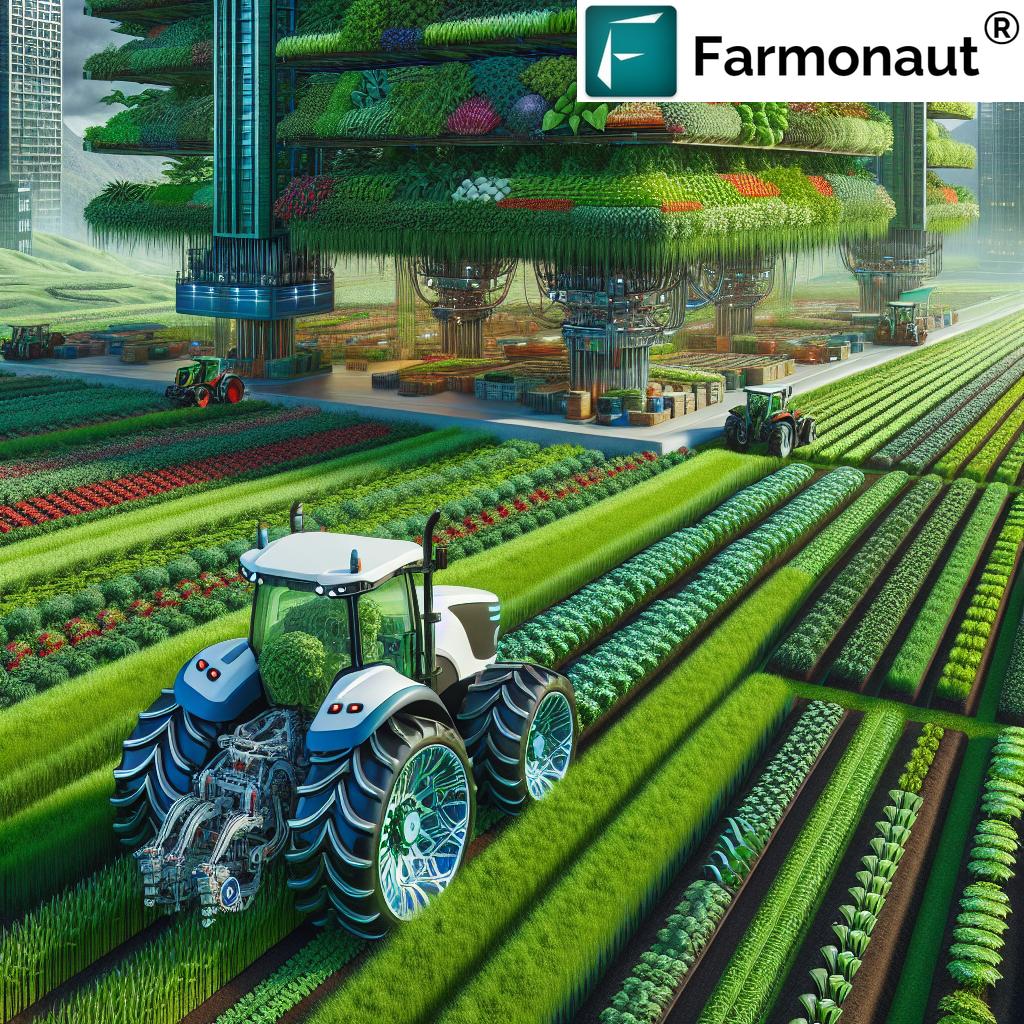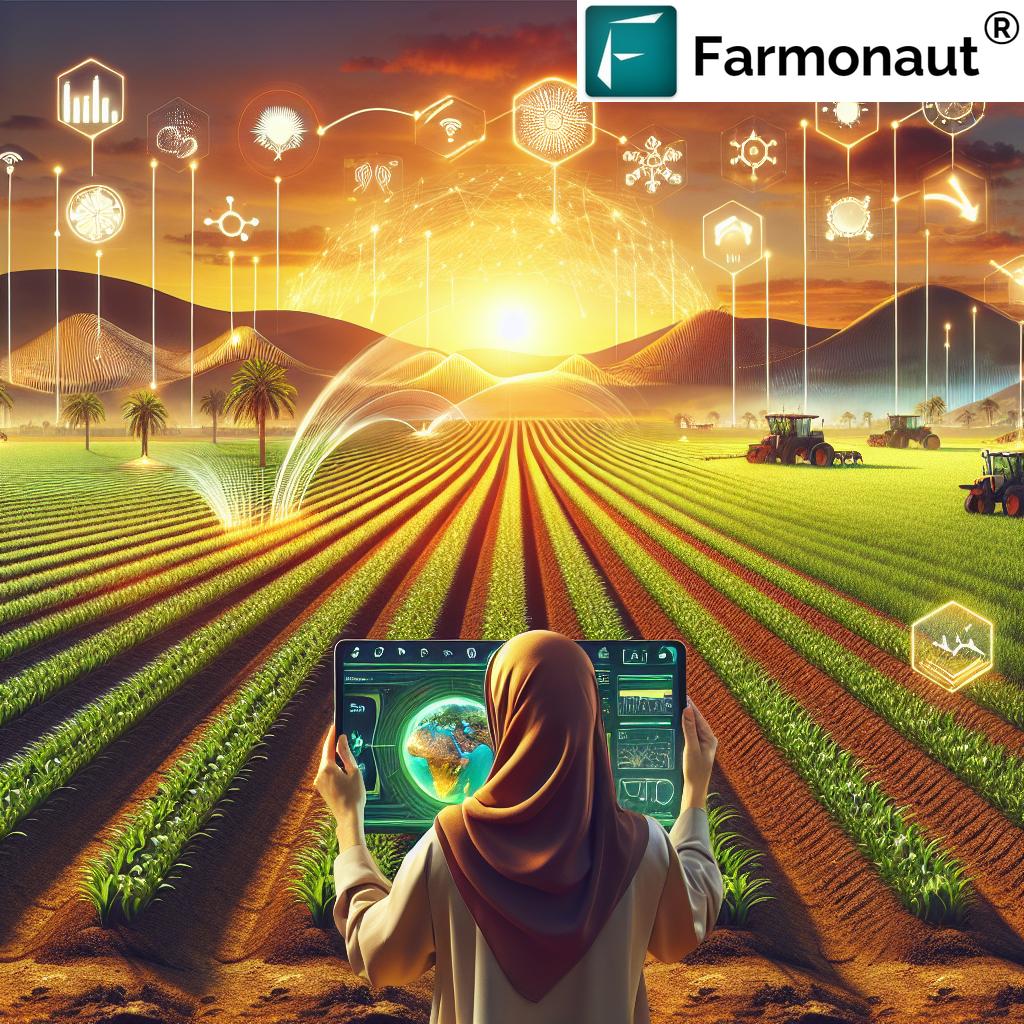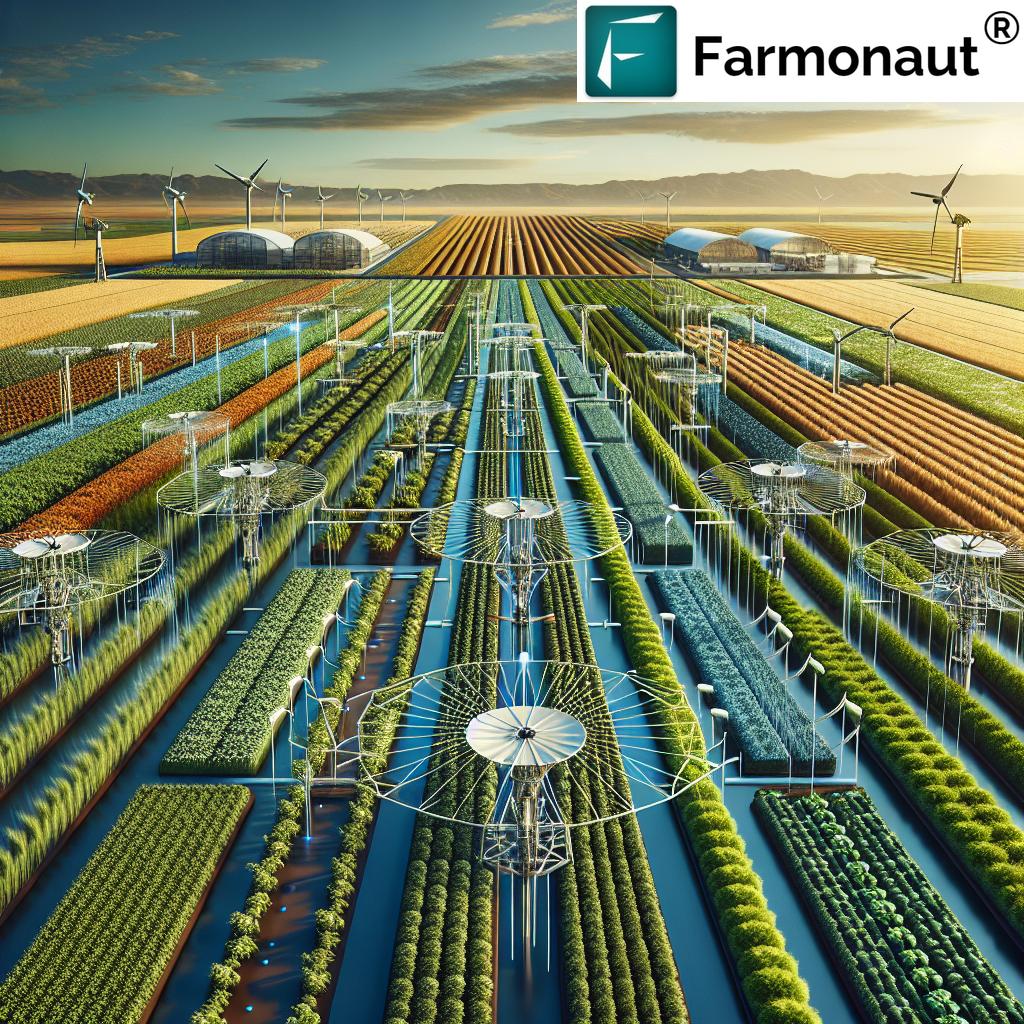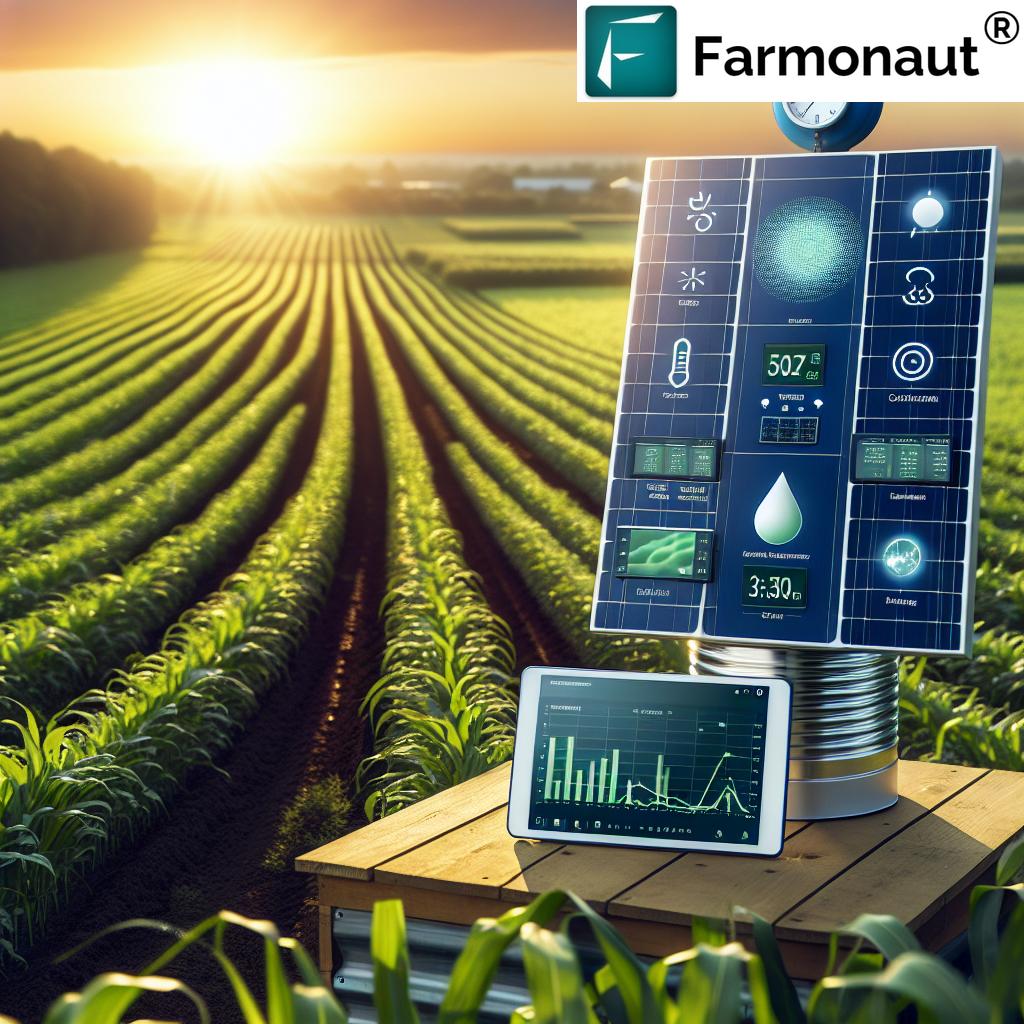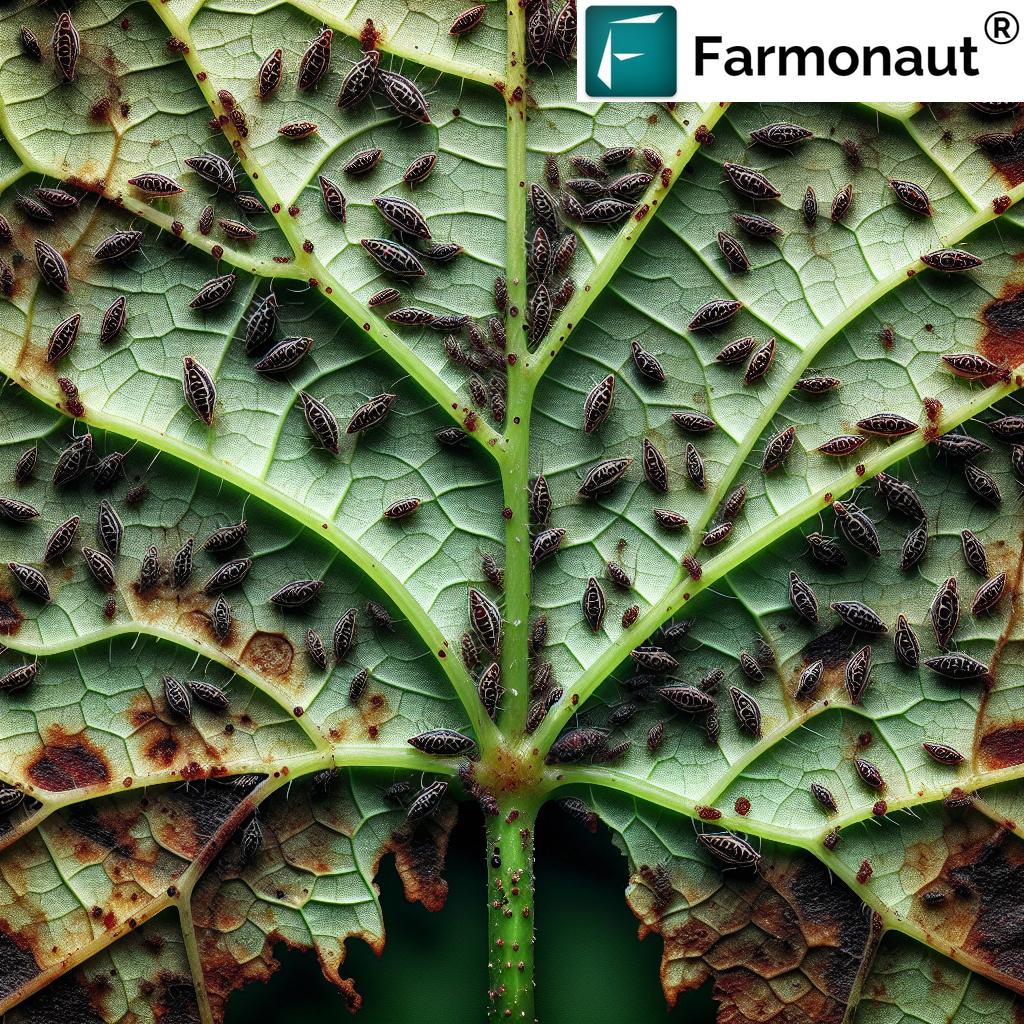Agriculture Innovation: 7 Shocking Tech Breakthroughs!
“Precision agriculture can increase crop yields by up to 20% using satellite and sensor data for smarter farming decisions.”
Introduction: The Need for Agricultural Innovation
In the rapidly changing landscape of global agriculture, innovation has become more critical than ever. Our growing population demands more reliable supplies of food, fiber, and fuel, all while environmental challenges and climate change intensify the pressure on farming systems. To rise to this challenge, advanced technologies and agricultural technology advancements are revolutionizing how we grow, harvest, and deliver our crops.
Agricultural innovation encompasses the development and application of new technologies, practices, and systems aimed at enhancing the efficiency, sustainability, and resilience of farming and forestry operations. As our communities grow and environmental issues mount, these innovations are becoming essential in meeting global demand efficiently and sustainably.
In this comprehensive blog, we’ll explore seven truly shocking technology breakthroughs that are transforming modern agriculture. From precision agriculture and artificial intelligence in farming to vertical farming techniques, gene editing, and blockchain in agriculture, we’re unveiling exactly how these advancements are boosting yields, supporting sustainable farming practices, and building resilient systems for the future.
Let’s dive into the future of farming — today!
1. Precision Agriculture: Data-Driven Crop Yield Optimization
The heartbeat of today’s agricultural technology advancements is precision agriculture. By leveraging GPS, remote sensing, and real-time data analytics, we can now monitor and manage field variability in crops at an unprecedented scale.
What is Precision Agriculture?
Precision agriculture refers to the use of advanced tools and technologies to guide farmers in applying inputs such as fertilizers and pesticides only where needed, thus minimizing waste and reducing environmental impact.
- GPS-equipped machinery automates accurate application of seeds, fertilizers, or chemicals, reducing human error and maximizing efficient resource use.
- Remote sensing and satellite imagery identify stress in soil or plant health, enabling farmers to act before yields are compromised.
- Data analytics and algorithms allow for precise crop yield optimization by forecasting weather, monitoring soil moisture, and mapping crop variability.
The beauty of precision agriculture lies in its adaptability: whether in a high-tech greenhouse or an open field, farmers can harness it to drive both efficiency and sustainability.
At Farmonaut, we specialize in making precision agriculture accessible to every type of grower. With our satellite-based crop health monitoring, farmers receive actionable insights on crop vigor, soil moisture, and vegetative indices like NDVI—empowering them to make smart, data-driven production decisions.
Explore how our real-time carbon footprinting solution can help you track and reduce emissions for truly sustainable agriculture.
2. Artificial Intelligence & Machine Learning: Next-Generation Data Analytics in Farming
Artificial intelligence in farming is reshaping every corner of the agricultural sector. By harnessing machine learning and advanced algorithms, we can analyze massive datasets to predict crop performance, detect pest outbreaks and diseases, and even recommend optimal planting strategies.
- Predictive analytics for crop yield: AI-powered tools forecast harvests by learning from weather, soil, and growth data.
- Disease detection: AI-driven image recognition and real-time sensor inputs enable rapid intervention for plant health issues, reducing crop loss.
- Automated advisories: Advanced algorithms recommend precise input application (seed, fertilizer, irrigation) based on historical and real-time data.
In regions like India, AI-powered apps have enabled smallholder farmers to improve climate resilience, reduce debts, and bolster savings.
Our Jeevn AI Advisory System delivers personalized crop management advice, combines satellite insights with weather forecasts, and suggests best-fit actions to maximize farm productivity.
The future of farming is smart, data-driven, and sustainable—powered by AI and machine learning.
3. Robotics and Automation: Revolutionizing Labor-Intensive Farming
Robotics and automation are heralding a new era in agricultural production. The integration of AI-driven machinery—from robotic harvesters to automated weeders—enables precise performance of repetitive tasks and the optimization of labor resources.
- Robotic harvesters use AI and optical sensors to identify and pick ripe produce at just the right moment, minimizing waste and reducing damage to crops.
- Autonomous vehicles and drones handle seeding, spraying, and harvesting, optimizing resource allocation and saving labor costs.
- AI-powered weeding robots efficiently remove weeds while leaving valuable crops undisturbed. This promotes sustainable farming practices by reducing dependency on chemical pesticides.
Automation is especially vital as the global labor shortage deepens, ensuring that agricultural operations remain productive and efficient.
Looking for a better way to manage your fleet and machinery? Farmonaut’s Fleet Management solution streamlines routing, scheduling, and maintenance, reducing downtime and maximizing harvest efficiency.
4. Controlled-Environment Agriculture and Vertical Farming Techniques
Controlled-environment agriculture (CEA) is pushing the boundaries of what’s possible in food production. By creating optimal conditions—managing temperature, humidity, and light—we can grow crops anywhere, anytime, sustainably.
- Vertical farming techniques utilize stacked layers in urban settings and greenhouses, maximizing yields per square foot and utilizing less land.
- Hydroponics and aquaponics remove soil from the equation, using nutrient-rich water or symbiotic aquatic systems for greater resource efficiency.
- Automated environmental controls and remote sensing mean that farmers can fine-tune conditions for optimal growth, no matter the weather outside.
CEA is revolutionizing urban agriculture, boosting production without increasing the strain on resources such as water and arable land.
Want to monitor your crop health and resource use wherever you farm? Use the Farmonaut Carbon Footprinting Tool to improve both efficiency and environmental sustainability.
5. Agrivoltaics: The Solar Revolution in Farming
Agrivoltaics introduces a remarkable synergy between renewable energy and agriculture. By installing solar panels above crops or livestock, we maximize the value of every acre.
- Dual land use: Agrivoltaic systems simultaneously produce electricity and food, offering income diversification for farmers and improved land utilization.
- Microclimate management: Solar panels can create desirable shade, protecting sensitive crops from extreme heat, while also reducing evaporation and conserving water.
- Large-scale impact: In the US alone, over 500 agrivoltaic projects contribute 9 GW to the grid, showcasing the scalability and ecological value of this approach.
By embracing agrivoltaics, we support the shift towards climate-resilient farming systems and a future where clean energy and robust food systems co-exist in harmony.
“Over 60% of farmers adopting new tech report improved soil health and reduced chemical usage in just two years.”
6. Biological Pest Control: Drones and Nature-Based Solutions
Biological pest control harnesses the power of nature and modern technology to manage pest populations—without resorting to synthetic chemicals. Through the deployment of drones, beneficial insects (such as ladybugs or parasitoid wasps) are released with immense precision.
- Drones for pest control: Drones distribute beneficial organisms evenly and quickly over vast fields, minimizing the need for chemical pesticides.
- Minimizing environmental impact: Targeted biological control means less residue, protecting local pollinators and enhancing agro-ecosystem health.
- Integration with remote sensing: By monitoring pest outbreaks with satellite or field imagery, applications can be targeted to hotspots for maximum efficiency.
Stay ahead in biological pest management using the Farmonaut Crop Plantation & Forest Advisory which delivers real-time advisories for integrated pest management, resource allocation, and sustainable intervention.
7. Blockchain Technology in Agriculture: Enhanced Product Traceability & Consumer Safety
Blockchain in agriculture introduces a new era of transparency, traceability, and consumer trust within agricultural supply chains. Blockchain technology enables:
- Immutable transaction records: Every stage of a product’s journey—from farm to fork—is recorded, ensuring authenticity, safety, and quality.
- Supply chain visibility: Retailers, processors, and buyers can confirm origins and treatment of products, reducing food fraud and contamination risks.
- Consumer empowerment: End-users gain greater insight into how, where, and by whom their food is grown.
Farmonaut’s blockchain-based traceability solution brings this revolutionary system to agriculture and textile businesses, providing granular data and full transparency across the value chain.
Blockchain technology not only safeguards the supply chain for both businesses and consumers—it also elevates reputation and market value through demonstrated food safety and transparency.
8. Gene Editing and CRISPR Technology: The Frontier of Climate Resilient Crops
Gene editing—especially using CRISPR—is empowering us to develop climate resilient crops and enhance food production in ways previously unimaginable.
- Precision breeding: CRISPR enables highly targeted modifications in plant genomes, allowing for the creation of crops with improved disease resistance, greater nutritional value, and superior adaptation to climate stressors.
- Rapid innovation: Traditional breeding can take years; with gene editing, desirable traits can be introduced in a single generation, speeding up progress in agriculture.
- Global crop security: As climate events become more extreme, the development of resilient crop varieties ensures stable food production and helps safeguard against shortages.
Through gene editing and CRISPR technology, we can customize crops to grow in diverse and challenging conditions—key for a sustainable future where agricultural innovation is demanded by both nature and society.
Sustainable & Regenerative Agriculture Methods for Increased Productivity and Carbon Sequestration
Beyond technology, the transformation toward sustainable farming practices and regenerative agriculture methods is vital for long-term agricultural and environmental health.
Regenerative agriculture goes beyond simply minimizing harm. It encompasses practices that improve soil health, increase biodiversity, and sequester carbon into soils—thus restoring and strengthening the very foundations of our food systems.
- Cover cropping and no-till methods enrich the soil with organic matter, improving fertility and water retention.
- Multi-species planting and rotational grazing diversify the farm ecosystem, promoting resilience and reducing pest pressure naturally.
- Soil carbon monitoring and reporting are now possible using satellite and remote sensing technologies, ensuring transparent climate-smart agriculture.
Farmonaut’s carbon footprinting platform can help you track and reduce environmental impact, supporting compliance, reporting, and sustainable certification goals.
As policymakers and investors increasingly back regenerative agriculture and carbon sequestration projects, these methods will take a leading role in future-proofing our agricultural sector.
Comparison Table of Agri-Tech Breakthroughs
| Technology Name | Year Introduced (Est.) | Key Function/Benefit | Sustainable Impact | Estimated Yield Improvement (%) |
|---|---|---|---|---|
| Precision Agriculture Tools | 1990s | GPS, remote sensing, and data analytics for targeted resource management. | Reduces input waste; minimizes environmental impact; optimizes production. | Up to 20% |
| AI & Machine Learning Advisory | 2010s | Predictive analytics, disease detection, smart recommendations. | Improves decision-making; boosts resilience; minimizes losses. | 10–25% |
| Robotics & Automation | 2015+ | Automates labor tasks, harvesting, weeding. | Reduces labor; minimizes crop losses; less chemical use. | 15–30% |
| Vertical Farming Platforms | 2012 onwards | Climate-controlled, layered crop production. | Maximizes land use; reduces water; year-round supply. | 100–400% (per sq ft) |
| Drone-Driven Biological Pest Control | 2020s | Aerial release of beneficial insects for pest suppression. | Reduces pesticide use; safer for pollinators & environment. | 8–20% |
| Blockchain Traceability Systems | 2018+ | Immutable, transparent product journey recording. | Reduces fraud; enhances food safety; builds consumer trust. | Indirect (quality and supply chain efficiency) |
| Genetically Edited Crops (CRISPR) | 2018+ | Targeted, rapid crop improvement for yield, nutrition, resilience. | Climate adaptation; reduces loss from pests/stress. | 10–50% |
Try our Farmonaut API — full API documentation here for custom agri-solutions.
Challenges and Future Directions in Agricultural Innovation
Despite unprecedented progress, agricultural innovation faces important challenges today.
- Funding shortfalls: Cuts to publicly funded research can halt breakthrough work on climate resilient crops and advanced technologies, slowing our progress against global food and environmental challenges.
- Digital divide: Some regions still lack affordable access to advanced tools and digital infrastructure.
- Policy and data gaps: Without effective frameworks and open platforms, it remains tough to standardize, verify, and scale up new agri-tech systems.
- Adoption and training: Farmers and rural communities need ongoing support and education to benefit from new methods and technologies.
To accelerate transformation, we need:
- Greater investments in R&D, especially for smallholder and climate adaptation projects.
- Public and private sector collaboration for driving sustainable practices.
- Policies that reward innovation and resilience in the agricultural sector.
By addressing these barriers, we’re not just innovating for profits, but also for planetary health and future generations.
Secure your farm’s future with scalable Farmonaut Large Scale Farm Management — support for entire plantations, cooperatives, and agri-businesses.
Farmonaut Ecosystem: Powering Next-Gen Agriculture
As a pioneering agricultural technology company, Farmonaut is dedicated to democratizing precision agriculture and ensuring sustainability is at the heart of global farming operations.
- Satellite-based crop health monitoring for real-time NDVI, soil moisture, and resource insights.
- AI-powered advisory systems like Jeevn AI for personalized, actionable crop strategies.
- Blockchain product traceability for authentic, fraud-proof supply chains.
- Fleet and resource management tools for operational efficiency and improved yields.
- Carbon footprinting features for measuring and minimizing environmental impact.
- API access for businesses seeking to integrate satellite and weather data into custom agritech solutions.
Every solution is built to be affordable, accessible, and scalable for everyone—from smallholder farmers to multinational enterprises and government bodies.
Want to know more about our subscription options? See below:
Frequently Asked Questions (FAQ)
Precision agriculture is the application of advanced tools (such as satellite imagery, GPS, and data analytics) to optimize resource use, reduce waste, and maximize crop yields. It is crucial for sustainable and profitable farming in the face of changing environmental conditions and global demand.
Q2: How does artificial intelligence improve farming operations?
Artificial intelligence (AI) and machine learning analyze vast datasets, forecast crop performance, detect diseases and pests, and offer customized planting and input recommendations. This leads to more informed decision-making, improved resilience, and enhanced farm productivity.
Q3: Can robotics replace human labor in agriculture?
Robotics and autonomous machinery are designed to supplement and enhance human labor, especially in repetitive or physically demanding tasks like harvesting and weeding. While they reduce labor costs, the human role in management, oversight, and specialized operations remains vital.
Q4: What is the benefit of blockchain in agriculture?
Blockchain technology ensures transparent, tamper-proof records for every step in the supply chain, from farm to consumer. This increases trust, product authenticity, and food safety, while reducing fraud and inefficiency.
Q5: How do I start using Farmonaut’s services?
Download our app on Android or iOS today, or use the web app. For business and advanced integration, try our API and refer to our developer documentation.
Q6: What are regenerative agriculture methods?
Regenerative agriculture refers to sustainable practices that restore soil health, increase biodiversity, and sequester carbon. Examples include cover cropping, no-till farming, agroforestry, and holistic livestock management.
Conclusion: Building a Resilient Future with Agricultural Innovation
The seven shocking tech breakthroughs featured here—from precision agriculture and artificial intelligence to blockchain and gene editing—have already begun to reshape modern farming. By implementing these technologies and practices, we can improve yields, conserve vital resources, and increase the resilience of global food systems.
At Farmonaut, our mission is to make precision agriculture affordable and accessible—ensuring every farmer, enterprise, and government agency can thrive in the new era of intelligent, sustainable, and productive agriculture.
Ready to join the agricultural revolution?
Download Farmonaut today or register on our web platform to transform your farming operations with cutting-edge tech and actionable insights—anywhere in the world.


